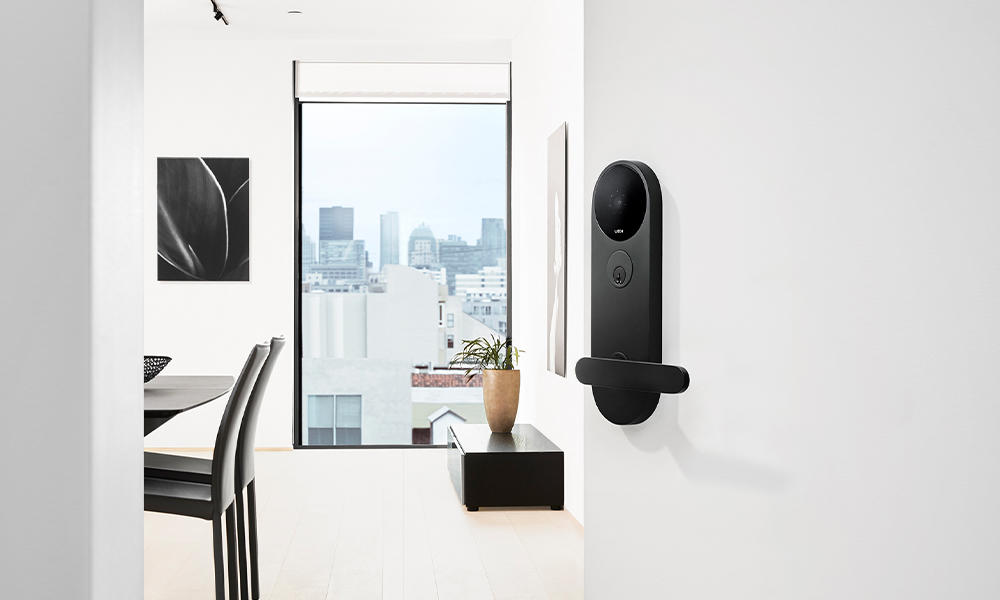Whether developing a new property or renovating a building to meet residents’ needs, multifamily owners are constantly faced with decisions that will determine the long-term value of their real estate.
Owners know that when it comes to property tech, it can prove difficult to make investments that both drive down operating costs and capital expenses while ensuring that property value goes up. This is because these solutions are often accompanied by a slew of hidden fees, and because they don’t always provide owners with an opportunity to increase revenue through rent or amenity upside. Additionally, many of these solutions simply are unable to stand the test of time. Their technology becomes outdated, or their value proposition simply becomes less relevant to the modern resident.
Smart access, however, has emerged as an exception to this rule.
According to a survey by property management platform Entrata, smart access is the second most-desired smart home amenity among multifamily residents. Additionally, it is one of the ten amenities—alongside in-home laundry services, the ability to make online rent payments, and an automated maintenance request system—that they say they would pay a premium for. Fifty percent of those surveyed would be willing to increase their rent by at least $20 a month to live in a “smart community,” while 15% say they’d be willing to go up to $45.
The Entrata survey highlights the fact that residents equate smart access with convenience, especially if they’re able to share access with guests or service providers. This makes sense when you think about the fact that the average tenant spends a total of 2.5 days waiting to let in deliveries and other visitors. At a time when resident’s lives are increasingly revolving around tech-enabled services, from on-demand grocery delivery to dog walking, smart access establishes the framework (and makes a lucrative case) for amenities that support smarter living.
At Latch, we’ve gone beyond keyless entry when designing our access control products—designing a full-building solution that provides residents and property managers with flexibility, convenience, and security. The result? A smarter apartment that meets the needs and expectations of modern residents, and also facilitates greater operating efficiency, faster leasing, decreased turnover, and rent upside for building operators and owners.
Here are a few of the ways that Latch helps owners increase their property valuation and future proof their building.
Operating efficiency.
Multifamily building operators lose time and money responding to lockouts, overseeing the access of service providers and maintenance staff, and managing delivery logistics. (Dealing with deliveries is especially time consuming: according to data from the National Multifamily Housing Council, forty percent of residents regularly order perishables to their building).
With Latch Manager, a web-based property management platform, these operators can easily assign access when residents move in (and remove it when they move out) without any rekeying necessary. They can also share credentials with building staff and maintenance workers and oversee their access history.
Delivery and service provider innovation.
With more than half of all U.S. households subscribed to Amazon Prime, and the rise of on-demand services like dog walking or house cleaning, residents and property managers are in need of new ways to let the right people in—especially when they’re not home. By partnering with national delivery carriers like UPS, Latch facilitates in-lobby, unattended deliveries, and reduces the burden put on building management. The Latch App also allows residents to share temporary access with service providers—making daily life more convenient and secure.
Cost effectiveness.
Latch protects owners from some of the unexpected capital expenditures that can pop up during and after construction. With Latch, owners only pay for hardware and software, and avoid additional infrastructure costs incurred from complex wiring, additional hubs or control panels. For individual units, Latch devices are designed without expensive electrical, internet or Wi-Fi, making it an especially affordable solution for retrofit projects where tearing down walls is not an option.
Spatial flexibility.
Access also helps make spaces more flexible—facilitating experiences that help owners lease up faster and earn more, like unattended leasing and short-term rental. Latch has partnered with Niido, a co-living community powered by Airbnb, to provide residents and property managers with easier and more secure ways to welcome temporary visitors (and fill vacant units). This is equally attractive for residents looking for ways to unlock extra income by renting out their couch, room, or entire apartment.
Privacy and security.
An important consideration for owners looking to future-proof their properties is the privacy of residents’ personal data and security of their spaces. This is why Latch never shares residents’ unit-entry access history with landlords or property managers, and why residents are given visibility into if (and when) a property manager or maintenance person enters their apartment.
As owners continue to look for amenities and services that improve their bottom line and provide residents with the convenient and connected living experience they expect, smart access solutions like Latch will continue to prevail—and help bring possibility home.
Learn more about Latch.

